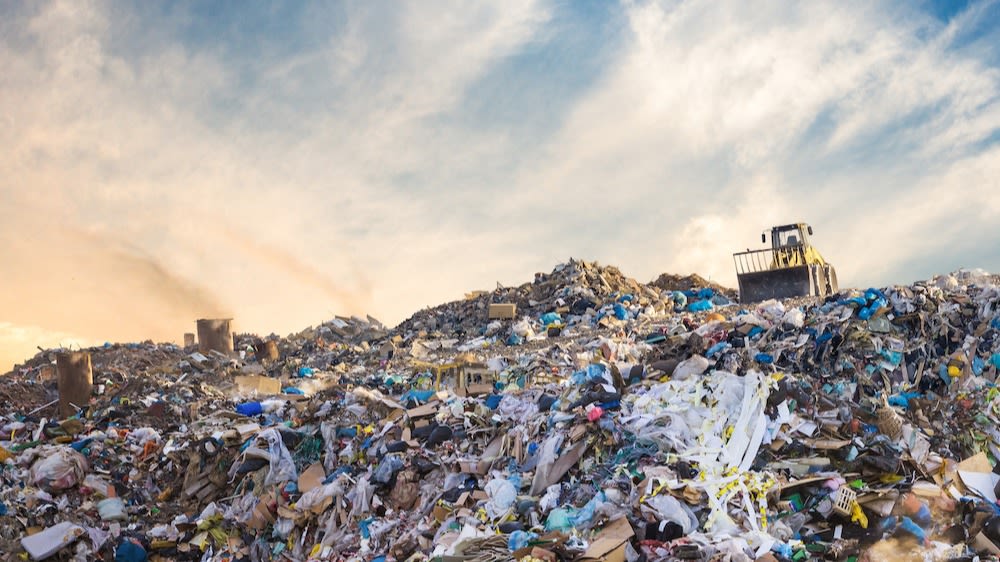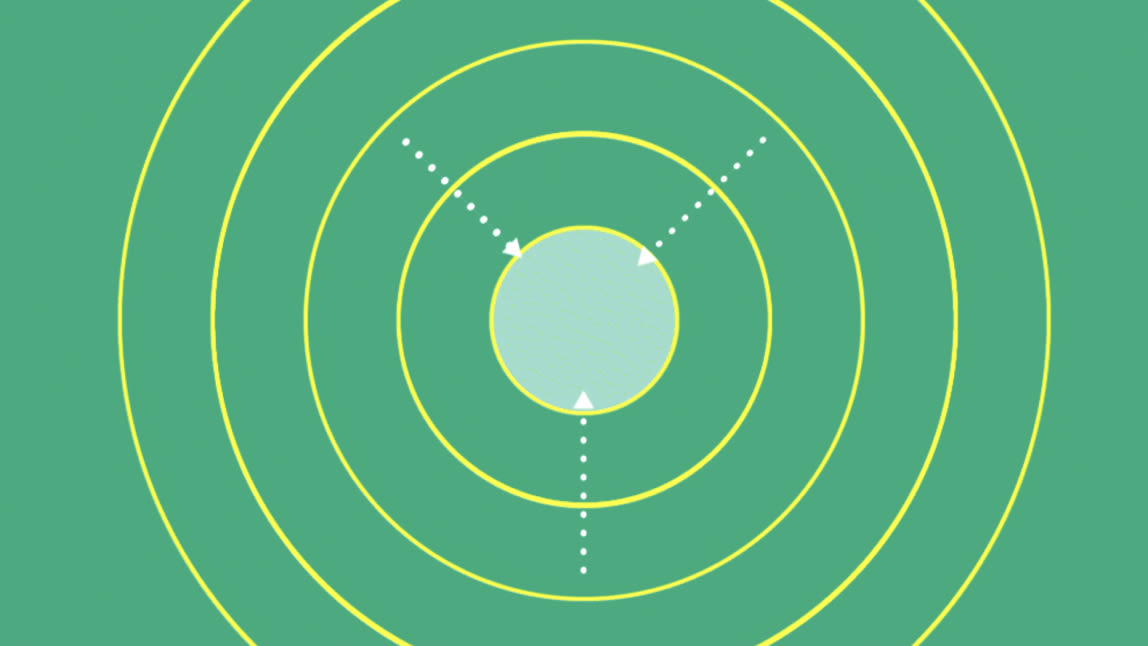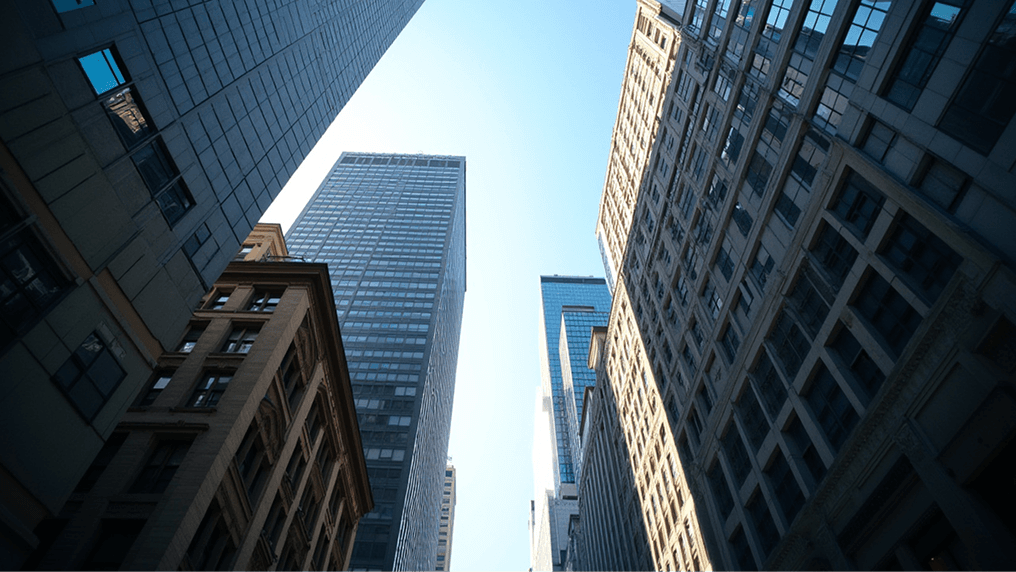Everything from our infrastructure to our finance systems is set up to support the current linear economy. These entrenched mechanisms make it hard to change a system as big and complex as the global economy. Momentum for a circular economy is growing but how do we break free of the linear mould?
Remember Betamax? No, chances are you don’t (even less so if you’re of the Netflix generation). Despite it often being considered the superior videotape technology in the 1980s, it was the VHS format that dominated TV sets – and the market. Betamax was consigned to the history books.
In the same era, academics studying technological innovations used the term lock-in to describe the peculiar endurance of dominant technologies, despite the emergence of better alternatives. The economist W Brian Arthur argued that “modern, complex technologies often display increasing returns to adoption, in that the more they are adopted, the more experience is gained with them, and the more they are improved.” As the technology improves, adoption rises further, and political, technological and social factors co-evolve alongside in support.
This reinforcing cycle can corner the market, locking the dominant tech in and subsequent alternatives out – even if they are superior. In turn, the interplay of supporting conditions creates an inertia that makes switching from one solution to another difficult. A decision taken historically, for the best of reasons, can have an enduring impact on today.

The same logic has been applied to our economic system. Our industrial system was shaped in an era when the global population was far smaller and resources were seemingly plentiful. The system of extracting materials from the ground, making things from them, and then disposing of them when we are finished appeared unproblematic at first. Yet as the world has grown, business-as-usual has reached its limits. Despite growing acknowledgement of the limitations of this system, and international awareness of the economic and environmental advantages of a circular economycircular economyA systems solution framework that tackles global challenges like climate change, biodiversity loss, waste, and pollution. It is based on three principles, driven by design: eliminate waste and pollution, circulate products and materials (at their highest value), and regenerate nature., powerful dynamics lock us into business-as-usual. A series of individual constraints, perhaps surmountable on their own, together have a reinforcing effect that creates system-level lock-in.
What does lock-in look like?
Take waste electrical and electronic equipment (WEEE) as an example, Europe’s (and America’s) fastest growing waste stream that harbours secondary raw materials estimated to be worth EUR 55 billion. Despite existing policies, technology, and business potential for a more circular system, a Finnish study has shown uptake of these solutions is still slow. But why?
The reasons for inertia are myriad and intertwined. For example, existing infrastructure is set up for destructive shredding recycling which only recovers a limited number of low-grade metals and plastics; upfront investment in new, closed-loop infrastructure to capture the full medley of materials – particularly critical rare earth elements – would be significant. Products are not conventionally designed to be disassembled, and material quantities can be small, which makes collecting economically viable volumes of materials challenging, especially as devices shrink. The economics of the status quo stack up for business, which can cheaply dispose of equipment in the current way while still complying with environmental regulations. Waste shipment regulations, necessary to prevent waste ‘tourism’ and dumping, can inadvertently block the development of hyper-specialist recycling services to recover materials, which can require international cooperation. Legislation is developing and has succeeded in increasing recycling in the EU, for example, but has not encouraged the reduction of material consumption or incentivised reusereuseThe repeated use of a product or component for its intended purpose without significant modification. as of yet.
Consider another case: the concrete industry, an energy-intensive sector that accounts for between 4 and 8% of global greenhouse gas emissions. A study in the Netherlands defined a complex array of factors inhibiting the transformation of the mature status quo, despite the emergence of less polluting variations. Among them: innovations that replace or reduce conventional concrete inputs are supported by prefab companies who stand to reduce their costs, but receive opposition from cement, sand, and gravel companies who would lose business. Vested interests along the supply chain can have a powerful lobbying effect which, along with the costly barrier to entry, stymies entrepreneurship and new players. Innovations might not comply with conservative regulations, norms, and certification, but changing these demands capital, time, and influence that often only incumbent firms can afford. Training courses for engineers and contractors focus on traditional materials, and project managers are typically not rewarded for clean innovations. Consequently, a series of forces funnel decisionmakers down the conventional path.

As well as existing industries, lock-in can foreshadow emerging ones. For example, in Denmark, investment has been ploughed into ‘clean’ waste-to-energy incinerators, which looked appealing as a clever way to generate power from waste once recycling options have been exhausted. Incineration now accounts for 5% of electricity generation and about 20% of district heating. Investment into such infrastructure can have a payback of several decades, which has committed the country to the technology, and locked in a demand for waste. To keep the lights on, waste is now imported to use the excess capacity, increasing CO2 emissions. In fact, Europe now appears to be backing away from incineration amid fears that reliance on these plants undermines recycling and discourages progress towards a circular economy.
In countless sectors, actors, infrastructure, and legislation create a powerful set of forces that cultivate the status quo and leave innovators out in the cold. Political and business decisions can lead to long-term investments that lock us into a certain model for years to come.
How do you unlock a lock-in?
Fixed, unalterable, unmovable: by definition a lock-in can sound fairly final. But change is possible. Challenges at this scale need to be addressed at a system level to tackle the causes.
The combustion engine is a good illustration of a system that seemed all but locked in. A complex system enables it: fossil fuel extraction, refinement, fuel station infrastructure. Manufacturers operate complex production lines to make familiar combustion engines, and the price is low compared to other forms of personal mobility. The reliance on fossil-fuel powered cars represents decisions taken in the early 1900s, when electric, steam, and petrol technologies were vying for dominance: the cheap price of the mass-produced Ford Model T ultimately won the argument. Before the turn of the millennium it would have been hard to imagine another form of personal transport.
Fast forward and today electric vehicles have well and truly rocked the boat. In 2021 electric car sales represented almost 9% of the global market, up from 2.5% just 2 years before, and consumer appetite has, according to some commentators, reached a tipping point. Investment is flooding into the EV market: GM has announced a USD 6.6 billion cash injection in an attempt to dethrone Tesla (a business valued at USD 1 trillion), Ford is reportedly spending USD 20 billion to accelerate electric car development and Toyota USD 35 billion.
The keys to unlocking the motor market? Innovation, investment, and policy.
Firstly, disruptive technology to improve batteries and extend the range and speed of electric cars transformed the landscape. Tesla is a case in point, as one of the loudest voices in the race to drive EV technology forwards.
Heavy investment into the tech accelerated the change.
And then, policy. “This is an example of a rupture of a lock-in that has been enabled by policy,” says Simone Vannuccini, Lecturer in the Economics of Innovation at the Science Policy Research Unit (SPRU), University of Sussex Business School, citing international examples of clean air legislation, public education, investment in the charging grid, subsidisation of electric cars, or specific incentives such as access to bus lanes. “With any type of technology where there is not an immediate incentive to adopt – because it’s too expensive or one doesn’t see an immediate return – policies can accelerate the path,” he adds; “Policy, if well designed, can have the capacity to rupture a lock-in.”

Breaking free: from linear to circular
The same principles can apply to transforming our economy. Innovation, finance, and policy are critical levers in shifting the system towards a circular economy, and they are being pulled.
Innovation
Circular innovation can be sought in a number of different quarters. Start-ups have the nimbleness and creativity to test and pioneer disruptive circular business models, such as Sojo, which is making clothing repairrepairOperation by which a faulty or broken product or component is returned back to a usable state to fulfil its intended use. accessible, or Ecovative, which makes compostable packaging from mushroom roots.
Institutions can promote innovation by actively supporting research and development. With the circular economy as a recognised ambition, the European Union funds a multitude of programmes in pursuit of circular innovations, from solar energy to chemistry.
Businesses can support new circular ways of doing business by deploying their research and development capacity to uncover new solutions. DS Smith, for example, has doubled its R&D spend in pursuit of cutting-edge circular innovation, with dedicated research teams, virtual platforms that facilitate the exchange of information and ideas, and a prototyping acceleration hub. Such strategic support can be market savvy, enabling companies to develop new revenue streams within the USD 4.5 trillion circular economy opportunity and stay competitive.
Investment
Once viable solutions have been found, they need investment in order to reach sufficient scale and challenge the powerful inertia of the business-as-usual. The finance industry has a critical role to play in mobilising a circular economy, which in return offers a major opportunity for the financial sector to deliver on climate commitments and ESG objectives while tapping into sources of new and better growth.
The sector is well aware of the opportunity. Investment in the circular economy has grown rapidly in the last few years. Assets managed through public equity funds increased 28-fold since the end of 2019, from USD 0.3 billion to almost USD 9.5 billion at the end of November 2021. BlackRock, the world’s largest asset manager, launched its first circular economy fund in 2019, which is now valued at around USD 1.6 billion (as at January 2023). On the debt side, bond issuance and bank lending related to circular economy projects for 2021 was around USD 32 billion and USD 16 billion respectively.
Recognising the opportunity, big business is not only contributing to innovation, but also investing in circular opportunities to accelerate scale. L’Oréal, for example, has invested EUR 50 million into a circular innovation fund aimed at scaling breakthrough developments and Google has just launched a new accelerator for circular economy start-ups.
Policy
In parallel, policy can be a powerful enabler. As with electric vehicles, good policy design can break the lock and nudge a system towards positive change.
Policymakers carry a heavy responsibility. Consequences are often unforeseen and in some instances policies can have the opposite to desired effect, locking in linear approaches even more tightly – it is highly unlikely that policymakers in Denmark intended to increase the country’s reliance on foreign waste, or to augment carbon emissions. “Setting certain recycling targets, for example, could mean industry meets them just by carrying on as usual,” says Henna Sundqvist-Andberg, Senior Scientist at VTT Technical Research Centre of Finland. “It doesn’t have to innovate.”
Developing policy in line with the five universal circular economy policy goals can mitigate the potential for further lock-in. For example, Extended Producer Responsibility (EPR) and Deposit Return Schemes (DRS) can incentivise the circulation of materials, while the deployment of subsidies and tax breaks can guide industry towards a circular economy.
“It’s challenging to set such regulations”, Sundqvist-Andberg continues. “There is a lot at stake for many actors. What could and should be done is to acknowledge those that will lose in these transformations, supporting those who lose, so they can find new ways to do business.”

Avoiding lock-in
Policy and strategy, like everything else, are designed, so circular design principles are a useful tool for moulding effective ones. To avoid lock-in, it’s helpful to first zoom out and view the full system that the measures intend to influence. This step allows policy designers to understand the impact on stakeholders and notice feedback loops, both positive and negative, that could be set in motion.
In a similar vein, a single, coherent vision and scanning the future horizon can avoid unintended consequences, such as ‘locking-in’ recycling in ways that prevent the development of upstream solutions such as elimination and reuse.
Once in place, it’s important to continually and actively evaluate and adjust strategies to ensure that they are achieving the right effect. We’re designing for a circular economy, but we’re in a linear system; interventions are unlikely to be ‘fully circular’ straight away but steps towards the end goal. Design is an iterative process and constant recalibration should be regarded as a fundamental part of the process. Policymakers should never be content with outcomes, suggests Sundqvist-Andberg; “they should always have more ambitious targets.”
Open to change
Changing something as big as an economy is not easy, but it is both possible and necessary. Business-as-usual does not work any more. Our linear system - which relies on extraction, waste, pollution and habitat loss - has had its day.
By working together, we can mould a new and better economy that can run in the long run. As Sundqvist-Andberg muses: “It’s not locked, even though it sometimes seems to be.”







